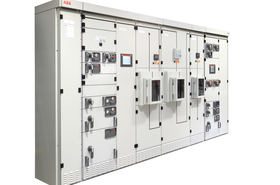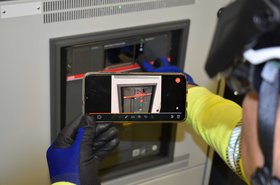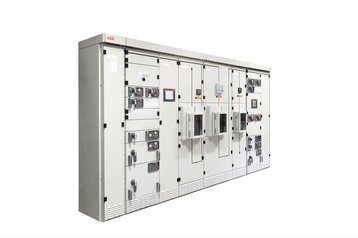The world’s race towards achieving carbon neutrality is on. For data centers, which are responsible for two percent of global power consumption, this is driving new pressure for even better energy efficiency. No easy feat, in an industry which continues to grow at almost lightning speed in line with the rate of digitalization.
The good news is that manufacturers have preempted this evolving requirement with the introduction of new sustainable innovation – as found in the latest Low Voltage (LV) switchgear.
Data centers are, of course, the factories of the digital age. Even though some consumers may not realize it, that ethereal place where we send our emails, stream our movies and store our files has a substantial physical presence – and it’s growing rapidly.
Today the world’s data doubles every two years. By 2025, it’s expected that our global data could double every 12 hours as the digital shift continues to radicalize the way we work and live all around the world.
The result is that the modern data center is getting bigger – much bigger. Some of the biggest data centers in the world already cover a million square feet or more, consuming as much power as a small city. But this is nothing compared to future forecasts, with this year alone expected to see $200 billion spent on global data infrastructure.
But with data centers estimated to account for more than two percent of the world’s electricity, there is still a huge question as to how they can be made to serve the planet’s developing digital services much more efficiently.
Going, going greener
Based on their sheer size and scope of business, data centers have a huge obligation to implement and promote more sustainable choices.
Inherently, they are energy intensive, consuming up to 50 times as much electricity per square foot as the average commercial building – and when this electricity comes from fossil fuels, it contributes to global warming.
Naturally then, recent years have seen the once ‘invisible’ data center operation come under greater scrutiny as leading economies seek to make haste in their plans for carbon neutrality.
In Europe alone the European Commission’s paper ‘Shaping Europe’s digital future’ explicitly stipulates that data centers should be climate neutral by as early as 2030 – a notion which, while the timescales may vary, has been echoed by many other world leaders.
Keeping cool
Of course, for the modern data center tasked with dealing with escalating demand and the new complexity afforded by the recent Covid-induced digital shift, investing in sustainability may not seem the obvious priority.
However, the reality is the current digital growth window offers an opportunity to accelerate the sustainable transition and future-proof the data center.
Key to this is a whole-of-building approach to energy consumption, whereby all elements of infrastructure and design interconnect to maximize efficiencies and carbon reductions.
Inherently though, this hasn’t always been possible for certain subsystems, such as low-voltage switchgear, which have historically been challenging to make sustainable – until now.
A product of extensive research and innovation, the newly updated NeoGear from ABB revolutionizes sustainability in the switchgear category.
Unique to the market, the range uses an innovative laminated copper plate technology which offers all the performance integrity of traditional busbar while negating the associated AC-losses – as validated in a recent scientific paper.
The result is an overall heat contribution reduction of as much as 30 percent. A benchmark study of a traditional switchgear versus the latest switchgear solutions showed that the reduction in AC-losses can save up to 9,000 kg of CO2 annually.
It is also incredibly compact compared to traditional systems, with the number of electrical connections reduced by almost 90 percent and the space required for the bar by 50 percent. This enables huge space savings, with a reduced switchgear footprint of up to 25 percent.
Importantly for ‘hot’ data centers too, this approach can also significantly increase cooling efficiency in low-voltage switch rooms where conditioning systems are used.
Primarily, this is because the absence of AC-losses reduces the energy needed for LV switchgear room conditioning by up to 20 percent. More so, because NeoGear can be housed in a much smaller space there is less volume to be cooled – creating additional energy reductions.
Working smarter, not harder
As the epicenter of connectivity for modern business, an uninterruptible, seamless power supply is absolutely imperative for the data center.
The new 4-pole generation of NeoGear takes this into account. Its expanded digital capabilities include real-time condition monitoring, predictive maintenance and fault and solutions diagnostics.
This high level of monitoring can prove invaluable in ensuring equipment is maintained in good working order and vital repair work can be planned in advance to negate any negative impact on productivity.
This is supported with a new remote assistance function, enabling technicians to get to the root of a problem and resolve issues much more efficiently, along with data analytics for greater management and control to ensure optimum reliability and productivity.
But it’s not just about operational reliability. By helping businesses effectively work smarter not harder, these new digital capabilities mean data centers can deliver a better performance while negating the risk of energy being wasted through interruptions and inefficiencies, for a much smaller carbon footprint.
Sustainable prosperity
As we look to the future of global data center infrastructure, there is no doubt that the sustainable mandate is going to come into much sharper focus – and sooner rather than later.
Therefore, as data centers continue to expand and evolve in line with digitalization, the shrewd move would be to seek to achieve this with a much greater focus on sustainability.
This will require a whole-of-building approach, one which gives careful consideration to every single component, both big and small, which offers an opportunity to unlock energy savings.
In enabling not just energy reductions but a smarter, efficient way of working, sustainable low-voltage switchgear is one tool which every data center should have in their armoury in seeking to power tomorrow’s data needs more effectively, reliably and sustainably.
More from ABB
-

Sponsored ABB NeoGear safest, sustainable, digital switchgear on the market
ABB extends its IEC low-voltage switchgear portfolio with the launch of its new NeoGear 4-pole and upcoming 690 V versions, combining ‘next level’ safety with sustainable Industry 4.0 digital capabilities
-

Sponsored We just don’t have the skills (and neither does APAC)
It seems no geography is safe from the skills shortage
-

ABB offers augmented reality for remote support
Closer and Raise products let local engineers access remote help


